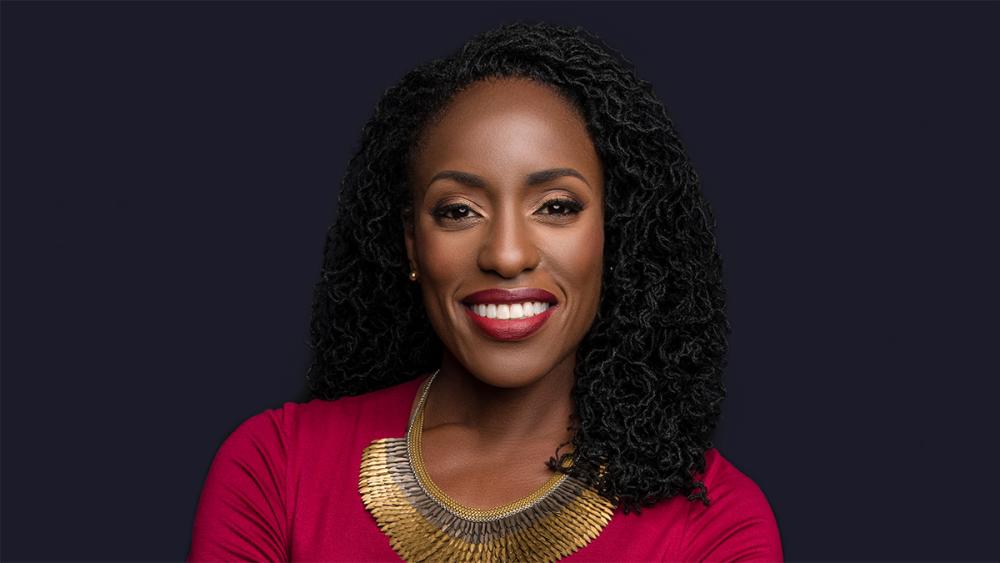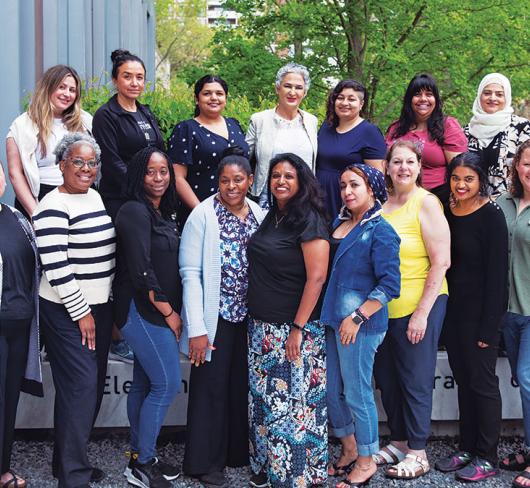
Learning to Critically Address Anti-Black Racism: Voice in Conversation with Kike Ojo-Thompson, Principal Consultant, Kojo Institute
VOICE: You work as an equity consultant, helping organizations build towards more equitable outcomes for their staff and the communities they serve, but you have also worked as a teacher and with a number of boards where systemic and anti-Black racism have been significant issues. Can you talk about what systemic racism or systemic forms of oppression mean?
KIKE OJO-THOMPSON: As an equity consultant, facilitator and practitioner, I work towards equity using anti-oppressive practice, anti-racism and anti-Black racism frameworks. I use those frameworks, because, unlike more popular frameworks such as Diversity and Inclusion, they identify the system, how it operates, and how it impacts people as a result of the legacies of colonialism, slavery, patriarchy, capitalism, religious crusades, etc. Anti-racism, anti-Black racism and anti-oppressive practice move beyond the redistribution of resources as a strategy to address how the system operates to produce social inequalities.
A significant idea at the heart of systemic racism is that our systems are neutral, that the system does not have values, preferences, or an identity, and that regardless of who you are or where you come from, the system will treat you the same. I’ve come to understand that naming the system as not neutral is an act of courage, particularly in a time and place where liberalism and more recently neoliberalism are so normalized. There is a heavy societal investment in the idea that you can be anything in this country if you simply work hard enough. This idea renders the system inconsequential and serves to normalize the fact that particular groups consistently do poorly within it. Instead of questioning the system’s impact on those groups, society problematizes the groups themselves for their ‘shortcomings’ – their inability to succeed – often citing their behavior, cultural practices and religious beliefs as responsible for their fates.
I have remained committed to outing this problematic process and injecting an alternative for addressing social inequality. As a former high school teacher in Ontario and a graduate of the Ontario Institute for Studies in Education, I have a connection to education as a sector, supporting a number of school boards. Consistently I see how boards take up the poor and troubling outcomes for African descent people, using a cultural deficit model. This uptake leads to strategies that focus on attempting to ‘fix’ the Black child/youth, their family and their community. It renders the issues to those of self-esteem, anger management and mentorship, completely ignoring the systemic and structural set up of education and its impact.
VOICE: That leads right into our next question. What is anti-Black racism and what are its impacts on Black students and Black educators?
KO: The term anti-Black racism refers to the specific form of racism that is perpetrated on Black people. While all racialized people experience and are the targets of racism globally, anti-Black racism is perpetrated by all non-Black people. In Canada, this concept was popularized by grass roots activists and academics in the 1990s. A core feature of anti-Black racism is the way that state authority is visited upon the lives of African Canadian people. When I say state authority, I am talking about all systems including education, criminal justice, immigration, child welfare, health and mental health systems.
We know that anti-Black racism is operating within education because of the outcomes we see for Black students. Disproportionate streaming into the lowest streams, over-representation in suspension and expulsion rates, lack of representation of Black staff and in the school’s physical environment, lack of curricular inclusion of Black people and Black ways of knowing, over-representation of Black students pushed out of education (otherwise known as the drop-out rate), lack of Black student involvement in academic and leadership spaces, and over-representation in athletic programs. These are just some of the ways that anti-Black racism is evident as it relates to Black students. As a result, Black students learn that they are both invisible and hyper-visible at any given time. Always taken up negatively, they learn to dislike their identities and origins. They question their capabilities and begin to understand education as an unsafe space and experience for them. They note the difference in how they are treated in comparison to their peers and begin to buy into the notion that whiteness is ideal. We see this in personal aesthetic choices as well as romantic/intimate partner choices made by some students. In others, we overhear anti-Black narratives among Black students and the looking down upon anything reflecting an African origin. All of these things are learned and as educators we need to understand how pervasive anti-Black ideas are so that we can be intentional about disrupting them.
For educators, navigating the whiteness of the education system is a daily hardship. When I was a teacher, I experienced the ways that my expertise and professional capabilities were questioned by my peers. When I committed to a social justice curriculum, I managed daily fears about the consequences I might face. Additionally, when Black teachers attempt to speak up to address the anti-Black racism they see playing out against Black students, they are problematized. The education system does not respond kindly to those who attempt to disrupt racism. In response, they experience punishment, silencing, gaslighting, sabotage, targeting and denial. They often have to make a hard decision: pursue justice and be relegated to the margins or uphold the status quo and endure racism as you “climb the ladder.” Neither decision is safe, though one appears to at least have immediate benefits.
For a fulsome appreciation for the impact of the school system which is steeped in whiteness, I wonder if readers will do an exercise with me…
Close your eyes. Now picture your own children in elementary school. Now imagine that when you drop them off at school, you are leaving them with an entire cast of Black people – from the principal to the school’s maintenance team. Most of the kids and other parents are Black too. Now also imagine that if you have any concerns about your child’s education and wish to speak to an authority figure, you would again be facing a Black person. How do you feel? Any worries? Questions? Do you feel safe and secure?
VOICE: You have talked about the legacies that impact anti-Black racism. What do these look like? How have these histories been perpetuated and reproduced? How do we recognize and challenge them?
KO: The legacies are the processes and occurrences that establish the location of wealth and dominance globally and define our values. In my work, I typically refer to six legacies: colonialism, slavery, patriarchy, capitalism, religious universalism and the theft and conquest of the Americas.
With regards to race, colonialism and slavery are the most relevant legacies. Colonialism locates wealth and dominance in the colonizing countries. The countries that historically colonized were in Europe: England, France, Spain, Portugal, Belgium, Italy, Germany, etc. The colonizing countries gained wealth and status and the bodies of the people who came from these countries have been imbued with that status (and sometimes wealth) as a result. Conversely, the countries that were colonized and those who come from those countries experience subordination. We use terms like ‘third world,’ and immigration policy makes it far more difficult for colonized people to move freely between countries. Through colonialism we come to understand that whiteness is ideal. Similarly, slavery locates wealth and dominance in white countries in Europe. It established the idealization of whiteness and Africa as the ultimate other. As such, African descent people are made the ultimate other.
Despite the fact that none of us were alive for either the trans-Atlantic slave trade or the onset of colonialism, the racism practiced today is rooted in these legacies. The meaning of Black bodies and white bodies is established through these legacies and maintained through our social institutions. Education plays a key role.
Our education system is not neutral. Education, along with child welfare, criminal justice and healthcare, proliferate and reproduce the values and ideas of the legacies. The dominance of whiteness is not natural but the result of the legacies. Equally, the subordination of Blackness is also not natural.
VOICE: How do gender and other intersections of identity add layers of complexity to this experience?
KO: There is some fantastic research available on the particular impact that anti-Black racism has on girls. Intersectionality is the phenomenon where two or more identities interlock to create a particular experience of oppression. For Black girls, their femininity is experienced through racism, as the racism they face is experienced through their gender. Their experience of anti-Black racism is different from their male counterparts. With every identity that is subordinated due to the legacies, we face discrimination and oppression in a way that is interlocking. Each form of oppression impacts the others.
VOICE: What are your thoughts on the ways in which COVID-19 has been affecting racialized communities in disproportionate ways and the fact that the government has only recently agreed to collect identity-based data?
KO: Canada’s failure to mandate the collection of disaggregated identity-based data in all facets of public service is further evidence of the assumption of the neutrality of our systems. Without making it mandatory, we leave the decision up to decision-makers who don’t understand systemic racism. Without disaggregated data there is no way to know definitively who is being impacted, and who is being effectively supported by social and medical systems.
The impact of COVID-19 in racialized communities in Canada is really about how social inequalities make groups more vulnerable to exposure and co-morbidities. Therefore, the work of addressing anti-Black racism is about more than just the liberation of Black people, it is a public health matter that affects everyone.
The education system should be invested in addressing anti-Black racism wherever it appears.
VOICE: You are going to be speaking on a panel called Four Big Questions on Racial Justice in Education. What are some of the things you plan to talk about?
KO: Yes! I’m really looking forward to the conversation. I’ll be joining my colleagues Paul Gorski, who runs the Equity Literacy Institute out of North Carolina, Dr. Debbie Donsky, Principal at Peel District School Board and Pamala Agawa, Vice Principal at York District School Board, on Zoom for four Thursdays in May. Each week we will discuss/unpack a different question pertaining to the pursuit of racial justice in education. My question asks: What can we, as individuals, do to disrupt racism within education? What does action look like?
I chose to take on this question because there are far too many people who claim to be invested in the work of eliminating racism in education but say and do nothing in the face of the daily examples before them. They often explain that they are “just a teacher,” or only have domain over their classroom. In both cases they are underestimating their influence and power. Surely, they understand that they have more power than their racialized students and their parents. Fear is a common excuse, but what exactly are teachers afraid of? What would happen if we collectively acted with integrity and in the fullness of our reach and capabilities?
If teachers are more concerned about appeasing organizational whiteness and their leadership and peers then they are not likely to do the work to disrupt.
VOICE: What are some good resources for educators who are interested in learning more about how they can recognize that anti-Black racism happens in systemic ways but we all individually can act to challenge or reproduce it?
KO: I believe in the power of education and learning but far too often we settle for training and learning as a response to systemic racism. What is clear to me is that teachers would do better if better was expected or even further still, if better were required. Educators must be committed to addressing what is arguably the most significant issue pertaining to education, of our time, and that is racism. It must be a requirement of the education system.
That said, if you are going to read, start with the many reports written about various school boards in Ontario, outlining the racism and anti-Black racism within them. There has been a low professional standard in education regarding the responsibility of educators to do research and take accountability for their awareness of the matters pertaining to their boards. This should be unacceptable. Part of the problem is that systemic racism includes denial and dismissal of the issue despite Ministry reports and evidence. One of the ways that the denial and dismissal is performed is by the collective ignoring of these vital reports. Each of us can take responsibility with this first step.
With contributions from Sonia Ellis-Seguin and Izida Zorde, ETFO Executive Staff.

